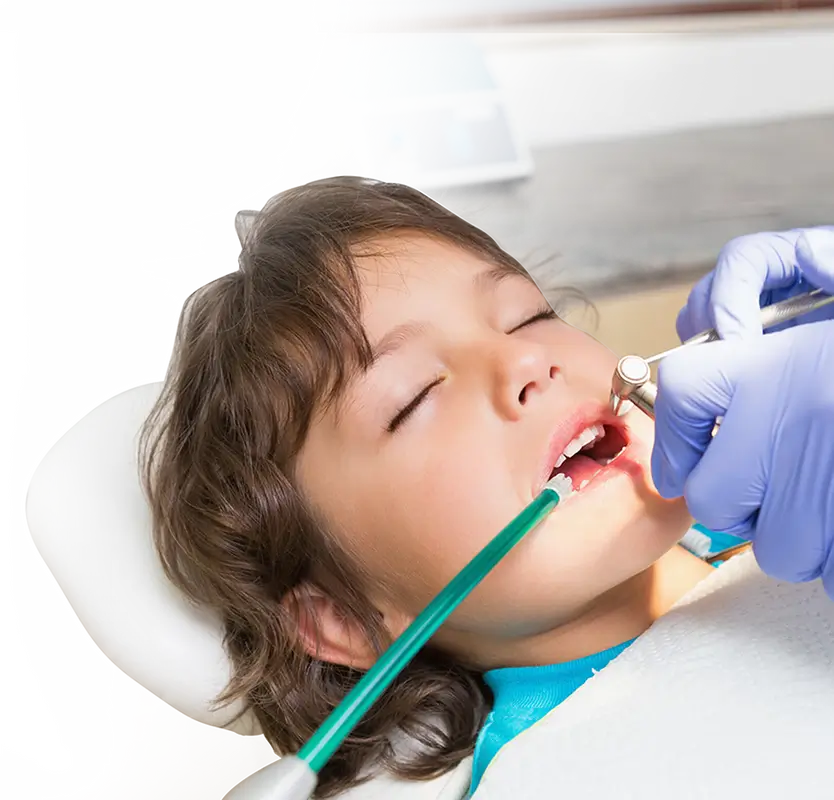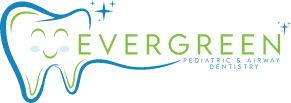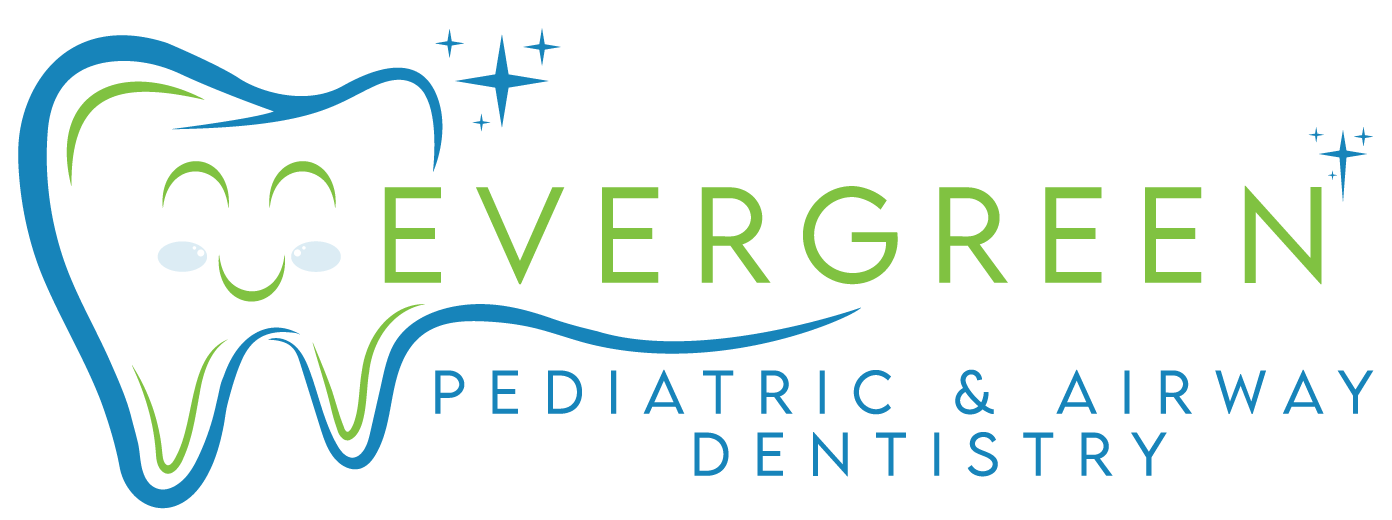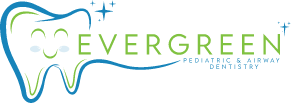Understanding Pediatric Airway Health: Why Your Child’s Breathing Matters at Night and During The Day
Your child’s breathing is about more than simply getting enough air. It’s directly intertwined with their overall health, growth, and quality of life. Pediatric airway health is a growing area of focus in medical and dental care, and understanding it can empower parents to support their child’s wellbeing.
This blog will explore the critical role of pediatric airway health, the subtle signs of possible problems during the day and at night, the risks of leaving these issues untreated, and proactive steps you can take. We’ll also introduce you to how Evergreen Pediatric & Airway Dentistry can make a difference in your child’s life through specialized care.
What Is Pediatric Airway Health?
Pediatric airway health refers to the proper functioning of the airway system, which includes the nasal passages, throat, and lungs. When this system works as it should, your child can breathe easily and efficiently, both during the day and at night. However, issues in any part of the airway can disrupt breathing and lead to a host of problems that affect sleep quality, focus, behavior, and even physical growth.
Healthy breathing supports your child’s brain, heart, and muscles with a steady supply of oxygen. An undetected airway issue might quietly interfere with these processes, robbing your child of the energy and focus they need to thrive. At Evergreen Pediatric & Airway Dentistry, addressing and supporting pediatric airway health care is a key component of their patient care.

Pediatric Airway Health
Anatomy of the Pediatric Airway
To understand pediatric airway health, it’s helpful to know how the airway is structured. Children’s airways differ significantly from those of adults. Their nasal passages, throat, and lungs are smaller, leaving less room for error when obstructions or developmental issues arise.
During growth, the airway is highly dynamic. For instance, the shape and positioning of the jaw, tongue, and tonsils change. If these structures don’t develop properly, problems like airway narrowing or obstruction can occur. Unlike adults, children’s airways are so closely tied to their growth and development that seemingly minor problems can result in broader complications.
While the human body is naturally designed to support nasal breathing, any structural or functional issue can force your child to breathe through their mouth instead. Mouth breathing over time can negatively impact development, leading to changes in the structure of the face, jaw misalignment, and even long-term airway issues.
Daytime Breathing Patterns: Signs and Symptoms to Watch For
Breathing efficiently during the day is essential for an active and happy childhood. Proper nasal breathing filters and humidifies the air, supporting overall respiratory health. However, many children display signs of airway issues during the day. Some of these signs include:
- Mouth breathing: This is often a red flag for airway obstruction, as it bypasses the natural filtration and humidification processes provided by proper nasal breathing mechanisms.
- Snoring or noisy breathing: These signs could indicate potential blockages in the nasal passages or throat, which may impact airflow and overall respiratory functionality during sleep.
- Nasal congestion: Chronic nasal stuffiness without an apparent cause, such as allergies or a cold, may point to deeper underlying airway or sinus-related health issues.
Behaviorally, children with airway problems may exhibit fatigue, irritability, or difficulty focusing. These symptoms are sometimes mistaken for attention-related disorders, but they could actually stem from inadequate oxygen intake during the day.
Nighttime Breathing: Sleep’s Role in Airway Health
Sleep is when the body does much of its healing and growing, making nighttime airway health especially important. Sleep-disordered breathing can disrupt this process and contribute to serious health risks. One common issue in children is obstructive sleep apnea (OSA), a condition where the airway becomes partially or completely blocked during sleep.
Signs that may indicate nighttime airway issues include:
- Loud or irregular snoring.
- Pauses in breathing (apneas) followed by gasping or choking sounds.
- Restless sleep with frequent tossing and turning.
Children with OSA might wake up feeling unrefreshed, despite getting enough hours of sleep. Over time, this can lead to problems like poor school performance, mood swings, and even slowed physical development. If you’re noticing these symptoms, it’s crucial to consult with a professional like those at Evergreen Pediatric & Airway Dentistry.
Common Pediatric Airway Disorders
Several common conditions may impact your child’s airway health. Below are a few key disorders to be aware of:
Obstructive Sleep Apnea (OSA)
OSA occurs when the airway partially or fully collapses during sleep, disrupting normal breathing patterns. It impacts approximately 1-4% of children, particularly those with obesity, enlarged tonsils, or certain craniofacial abnormalities. Left untreated, OSA can lead to issues like daytime fatigue, behavioral challenges, and reduced oxygen levels during sleep.
Allergic Rhinitis
Hay fever and other allergies can inflame your child’s nasal passages and lead to chronic nasal congestion. Persistent nasal blockage often forces children to breathe through their mouths, which can impact proper jaw and facial development. Addressing allergic rhinitis is essential to improving airflow and maintaining healthy airway function overall.
Tonsil/Adenoid Hypertrophy
Enlarged tonsils or adenoids are common in younger children and can significantly obstruct airflow, especially during sleep. This condition often results in mouth breathing, snoring, and restless sleep. Treating hypertrophy through medical or surgical intervention can improve breathing and alleviate related symptoms like poor concentration and daytime drowsiness.
If left untreated, these conditions can lead to long-term health consequences, including delays in physical growth, impaired cognitive performance, and behavioral challenges.
The Risks of Ignoring Pediatric Airway Health
Ignoring airway health concerns can lead to a range of complications, both immediate and long-term. Here are some of the potential risks of leaving pediatric airway issues untreated:
- Developmental delays in cognitive and motor skills due to poor oxygenation of the brain
- Behavioral challenges such as irritability, difficulty focusing, and hyperactivity
- Poor academic performance, stemming from fatigue and reduced concentration
- Speech and swallowing difficulties, which can become more pronounced over time
- Facial growth concerns, as improper breathing may affect jaw and dental development, leading to conditions like an overbite or narrow jaw
- Chronic illnesses, including recurring colds, infections, or allergies
- Weight gain or obesity, as disrupted sleep patterns interfere with hormone regulation
Early diagnosis and intervention are crucial in mitigating these risks and helping your child live their happiest and healthiest life.

Pediatric Airway Dentistry
Proactive Steps for Parents: Monitoring and Supporting Airway Health
Parents play a crucial role in ensuring their child’s airway health. Here are practical steps you can take to monitor and support your child:
Observe Breathing Habits
Pay close attention to your child’s breathing patterns, particularly during sleep. Signs like consistent mouth breathing, snoring, or pauses in breathing may indicate potential airway issues. Early detection of these symptoms can help prevent more serious complications and ensure healthy development.
Regular Checkups
Schedule routine visits with healthcare providers specializing in airway health, such as pediatric dentists or ear, nose, and throat (ENT) specialists. These professionals can identify early signs of airway concerns, offering timely advice and interventions to address potential problems effectively.
Promote Nasal Breathing
Encourage your child to breathe through their nose instead of their mouth, especially during physical activities. Nasal breathing supports proper oxygen intake, filters dust and allergens, and aids in maintaining a healthy airway. Teach and model this habit consistently for lasting benefits.
Encourage Good Sleep Hygiene
Create a restful sleep environment by establishing consistent bedtime routines and limiting screen time before bed. A cool, quiet, and comfortable bedroom promotes better sleep quality. Prioritizing your child’s sleep hygiene can significantly enhance their overall well-being and airway health.
Small lifestyle changes can make a big difference. For example, improving your child’s diet and ensuring they stay active can support better airway health by reducing inflammation and maintaining a healthy weight.
The Role of Dental Health in Airway Management
Oral health and airway health are deeply connected, as factors like jaw alignment, palate width, and tongue positioning directly influence breathing. These elements, when imbalanced, can contribute to restricted airways and other related concerns. Early intervention is key to addressing these issues effectively and ensuring optimal long-term outcomes for your child’s health.
Dental health professionals play a vital role in supporting airway function. At Evergreen Pediatric & Airway Dentistry, specialized techniques such as myofunctional therapy and orthodontic interventions are employed to guide proper jaw and airway development. These treatments are designed to create lasting improvements by fostering natural growth and reducing structural limitations that could impact breathing.
By addressing bite or alignment issues early on, children can experience reduced risk of airway obstructions and associated complications. Proactive dental care helps set the foundation for healthy breathing patterns while promoting overall well-being. With expert guidance, your child can achieve both improved oral and airway health.
Collaborative Care: Working with Healthcare Professionals
Addressing airway health often requires a collaborative approach. A care team might include:
- Pediatricians: Pediatricians play a crucial role in evaluating a child’s overall health. They help identify potential underlying medical conditions that may affect airway health, such as respiratory disorders, allergies, or developmental issues, ensuring a comprehensive approach to treatment.
- ENT Specialists: Ear, nose, and throat (ENT) specialists focus on addressing nasal passages, tonsils, and adenoid issues. These areas can significantly impact a child’s breathing and airway function, making ENT care essential for optimal respiratory health.
- Pediatric Dentists: Pediatric dentists specialize in identifying and treating airway-related dental and orthodontic concerns. By addressing misalignments, bite problems, or narrowing of the dental arches, they help improve airflow and establish healthier breathing patterns for children.
At Evergreen Pediatric & Airway Dentistry, we work closely with other healthcare providers to ensure a cohesive treatment plan. This team-based approach allows us to tackle airway issues from all angles for the best outcomes.
Evergreen Pediatric & Airway Dentistry’s Role in Your Child’s Health
At Evergreen Pediatric & Airway Dentistry, we specialize in recognizing and treating airway issues in children using a holistic approach. Our team integrates oral health, growth, and airway evaluation to determine the best care for your child.
Here’s what sets us apart:
Advanced Screenings
We assess your child’s airway health using cutting-edge tools to pinpoint the root of the problem. These advanced screenings help us identify any underlying concerns that may impact your child’s sleep, growth, or overall well-being. By leveraging technology and expertise, we ensure a thorough and accurate evaluation for optimal care.
Customized Treatment Plans
Every child is different, and so are their needs. Whether your child requires orthodontic interventions, behavior-based strategies, or collaboration with other healthcare professionals, we design a fully tailored approach. Our priority is creating an individualized plan that supports your child’s unique situation and maximizes their health outcomes over the long term.
Expert Knowledge
With specialized training in both pediatric dentistry and airway health, our team bridges the gap between oral health and overall well-being. This dual expertise allows us to provide comprehensive care that goes beyond traditional treatment. Our holistic approach addresses root causes, helping your child thrive physically, emotionally, and developmentally.
Family-first Approach
At Evergreen Pediatric & Airway Dentistry, we believe in empowering parents through education and guidance. We work closely with families to ensure they feel confident in supporting their child throughout the entire process. By fostering collaboration and understanding, we build a strong foundation for your child’s long-term health and success.

Pediatric Airway Health Care
Empowering Parents to Take Action
Breathing is an essential foundation for your child’s well-being, and airway health impacts far more than you might expect. By understanding the importance of proper breathing, recognizing red flags, and taking proactive steps, you can ensure that your child thrives both day and night.
The next step? Take action today by scheduling an assessment with Evergreen Pediatric & Airway Dentistry. Being proactive could make all the difference in your child’s growth, happiness, and overall quality of life. There’s no better time than now to invest in their health.
Together, we can help your child breathe easy, sleep peacefully, and grow strong.
Evergreen Pediatric & Airway Dentistry
Dr. Susan Kim
12910 Totem Lake Blvd NE #103
Kirkland, WA 98034
(425) 814-3196
Get Directions on Google Maps
evergreenkidsdentist.com


